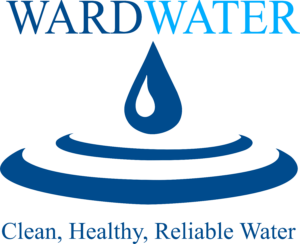 Uranium in Water
Uranium in Water
Uranium in water and whole house treatment options. Continued from Part 1.
Recapping our first article, the basic scenario is this; you’re in the process of purchasing your family’s dream home. All is going smoothly with the purchase. Then you hit a snag. The home inspector’s test results come back high for Uranium in water.
Not the best of news, but you gather your thoughts and start doing your homework. You decide to install a “whole house” treatment system. Now snag # 2 occurs: the water treatment companies you speak with are recommending installing a whole house Reverse Osmosis system. Sounds great! Then you hear the costs.
In this article we’ll look at an extremely affordable and effective way of dealing with Uranium in water, that won’t clean out your checking account!
Ion Exchange Uranium Removal
Ion exchange systems (aka softening systems) have been around for decades. They are a tried and true technology, that works.
Most people really aren’t aware of how Ion Exchange systems function. Unfortunately, many water treatment professionals don’t take the time to explain these systems to their customers. They also rarely tell them about the other contaminants, such as Uranium, they do a great job of removing.
Ion exchange is a very simple process. Think of an Ion Exchange system as a giant magnet, because that’s basically what it is.
An Ion exchange system, such as a softener, has a tank which is filled with tiny little beads of resin which attract oppositely charged particles from your water.
In the case of hardness a softener uses a negatively charged resin called Cation resin. It literally attracts positively charged calcium (hardness) particles from the water. It also attracts other positively charged particles like Iron and Manganese, too.
Every so often the system regenerates or cleans itself by using the salt pellets in the brine storage bin.
By adding water to those pellets during the cleaning process, it creates brine. The system then pulls that brine into the resin tank to cleanse or knock off particles from the resin beads that have accumulated (calcium, Iron etc). Once the beads are cleaned off…voila, it’s ready to start the process over and keep on collecting the unwanted stuff from your water.
Using Ion Exchange for Uranium
When we have a customer who has determined that they want to remove water Uranium from their entire home, 90+% of the time Ion Exchange is by far the most sensible and affordable way for them to do so.
Keeping that same “magnet” explanation in mind from before, let’s go ahead and turn that Ion Exchange system into a Uranium system…
All we do to accomplish this is to now add a positively charged resin to that same exact resin tank. It’s called Anion resin. You’ve probably already figured the rest out at this point, but Anion resin simply attracts negatively charged contaminants like Uranium (and even certain forms of Arsenic) from your water. The rest of the process, including cleansing, is basically identical.
Bingo…you now have a reliable and affordable way of removing Uranium from your family’s water. Oh, did I mention you just saved on average around 75% to 80% on the up-front costs compared to installing a whole house RO system?
 EPA – Ion Exchange, “Best Available Technology” for Uranium Removal
EPA – Ion Exchange, “Best Available Technology” for Uranium Removal
The EPA has identified Ion Exchange as a “Best Available Technology” and Small System Compliance Technology for the removal of Uranium in water.
According to The EPA’s page on Radionuclides in Drinking Water; “Ion exchange (systems) can be automated to require minimal operator attention making them appropriate selections for small (residential) systems.”
In other words, Ion Exchange systems are the best available way to remove Uranium from your home’s water supply with as little maintenance as possible.
Why Didn’t my Water Treatment Professional Tell me This? 
Outside of the obvious motivator of selling consumers very expensive whole house RO systems, there is another reason that Ion Exchange systems have remained fairly un-talked about.
Many years ago, when the industry first started looking at using Ion Exchange for Uranium removal, there were a few overblown articles published about the supposed “dangers” of these systems. Since then, many companies have remained shy of embracing the technology.
Basically the long and short of these articles warned that if a homeowner were to completely forget about the minimal upkeep on their system (occasionally adding salt pellets or forgetting to make sure the system had power or it’s timer was set), then an unwanted scenario could occur.
If an Ion Exchange system can’t function properly and allow itself to cleanse its resin beads regularly, then the “bad stuff” will continue to attract and collect on those beads until they can no longer function as they’re supposed to.
If this were to happen and the resin beads became “full”, those Uranium particles have the ability to fall off or “dump” from the resin beads. These dumps can enter a homes water supply in short & concentrated bursts, without a homeowner being aware of it.
This is all 100% accurate. This can occur under these circumstances. Our recommendations to homeowners is always the same; if you are a very forgetful person and don’t think you’ll be able to check the salt bin (and make sure the system is plugged in) once every month or two, consider not using Ion Exchange for Uranium removal.
A very easy solution to this would be to simply make arrangements with your treatment professional to send you a reminder email every couple of months. If they aren’t willing to do this easy task, it might be worth taking the time to consider just how dedicated to long term customer service they really are.
The Ketch
So, assuming you are that forgetful person we just talked about and you aren’t sold on Ion Exchange, but still want whole house Uranium removal for your family… you’re now back to the expensive whole house RO option.
Here’s the “Ketch”:
There’s probably a 90% chance you’re still going to need an Ion Exchange Softener as a part of your whole house RO system.
You’re going to end up back to square one and still have to maintain an Ion Exchange system, after all.
“Huh, did you just say I’m still going to have a softening system? Why am I still going to need a softener?”
In case you think I bumped my head, before I explain any further, take a look at the large picture of the whole house RO system, below and to the right (FYI this is not one of our installations). Want to take a guess as to what is sitting at the far left of that RO system? You guessed it: a softening system.
Reverse Osmosis systems like clean water – really clean water!
An RO system’s (whole house or point of use) ability to function properly and remove Uranium from water depends on making sure there is little to no Hardness, Iron or Manganese in the water before it reaches the RO. Very few homes don’t have some level of these minerals in their water. Most homes are simply going to require a softener as a necessary part of their whole house RO system to make sure the RO can take out the Uranium from the water.
If any amount of these contaminants are in your water the RO membrane (filter) is going to foul. Before you know it, it can no longer remove Uranium from the water. You’ll end up replacing the membrane(s) at light speed. That could get expensive, and very frustrating. Trust me when I say we’ve seen some very unhappy competitor’s customers out there over the years.
This is why the vast majority of homes that have a whole house RO system, also have an Ion Exchange Softener as part of their installation.
In addition, if you forget to keep up with the basic needs of your softener, not only will it fail to protect your RO system by not removing the hardness etc. from your water, another problem will occur. Those same minerals will continue to build up inside the softener’s resin tank (because it hasn’t cleaned itself), until the resin itself becomes completely ruined.
Once that happens, it’s pretty safe to say you’ll be replacing your $1500-$2000 softening system.
So, what’s the lesson here? If you plan on installing a whole house system for the removal of Uranium, plan on having and maintaining the basic needs of a softener. One way or another a softener is most likely going to be an important part of your Uranium treatment equation.
What Should I Do?
Ok, I know all of this can be fairly confusing. It can become pretty difficult deciding on which system will be right for your home. Let’s try and simplify things, at least a little.
Consider Choosing Whole House Ion Exchange if:
- Your primary concern is for the removal of Uranium from your water. If you have other contaminants in your water in addition to Uranium, such as Arsenic, consider an RO system. RO systems (point of use or whole house) are ideal for removing these two concerns simultaneously. Still weigh out the costs! Even having both a whole house Ion Exchange Uranium system AND a whole house Arsenic system will most likely cost far less than the whole house RO alternative.
- Your Budget doesn’t allow for the cost of a whole house RO system. Most households just simply aren’t in the affordability range of a whole house RO system. In addition, you could be looking at many hundreds of dollars per year in ongoing costs for a whole house RO system. It’s important to think both short and long term.
- You are comfortable remembering to add pellets to your system. As we mentioned before, you’d have to be a pretty forgetful person to allow that perfect storm of circumstances that could potentially cause issues. One option is to simply arrange with your water treatment professional to make a reminder call or email every month or two. If life gets busy, at least you’ll know someone will be there to help remind you to stay on top of things and your system will be working properly as it should.
- Your water’s pH isn’t low to begin with. The resin used in an Ion Exchange Uranium system will typically lower water’s pH level. If your water’s pH is already low (corrosive), you will want to look at installing some sort of neutralizing system as part of your installation so your water doesn’t end up becoming too corrosive. Neutralizer systems typically range between $1500 and $1900. Together, going this route will still be FAR less than the cost of a whole house RO system.
We’ve been using Ion Exchange systems for the removal of well water Uranium for a great deal of years now. We’ve had incredibly reliable success with these systems. Issues are rare and customers have been very happy with the units.
We’ve installed these systems in schools, day cares, camp grounds and residential homes in countless cases.
For more on this see: Uranium 101 | Is my Water Safe?
My best advice for you is to do your homework. Weigh out all the pros and cons of each treatment method. Most importantly, make sure you are very comfortable with the treatment professional you choose. Make sure they have your best interests in mind and aren’t looking primarily at what makes the most sense to their business.
Photo Attributes:
- httpwww.flickr.comphotosartbystevejohnson6307672876
- http://commons.wikimedia.org/wiki/File:Environmental_Protection_Agency_logo.png
- httpfr.wikipedia.orgwikiFichierQuestion_mark_3d.png
- http://pixabay.com/en/bat-icon-drawing-recreation-25760/





